FINDING YOUR ROOTS:
The Joys of Ordnance Survey Maps
by Lise Hull
Many people travel to Great Britain to experience a sense of the nation's vast history or to enjoy the beauty of the countryside. Others seek out their personal past and hope to learn about how their ancestors lived. Whether one's intent is to enjoy Britain's sights, sounds, tastes or culture or to trace family roots and visit ancestral sites, part of the excitement of the venture is choosing where to explore, mapping out the route and then discovering direct links between the present and the past. In a landscape where essentially every hilltop seems to sport a prehistoric earthwork fort, castles overlook river crossings and village centers, and Roman roads connect distant fortlets and ruined villas, using an Ordnance Survey (OS) map to guide one's steps eases the decision-making process and greatly enhances the journey.
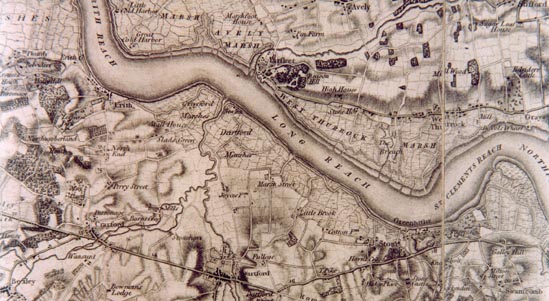
A portion of the 1801 map of Dartford, Kent -- the first map produced by Ordnance Survey (click to view larger image)
Originating in 1791 as part of a defense project to survey the English countryside, these meticulously measured, diligently drawn maps detail virtually every inch of land within Great Britain. OS maps identify public footpaths, trails and access points across public and private lands. They pinpoint landmarks such as post offices, public houses (pubs) and inns, churches and chapels, castles and forts, and ancient burial sites. In fact, these superb maps have the uncanny ability to bring people into contact not only with tiny hamlets and grand estates but also with a plethora of archaeological and historical sites. Many of the sites, such as Stonehenge on Salisbury Plain, have achieved international renown, while others, like Scorhill stone circle on Dartmoor, quietly endure the ravages of time and the weather to honor long-dead builders and the people who used them.
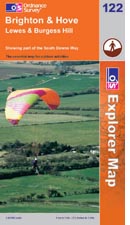 OS maps are much more than the traveler's best friend. They also guide family history hobbyists and serious researchers with genealogical ties to Britain back to their ancestral roots. In addition to the typical topographical features and road networks that maps commonly display, OS maps also outline individual structures, many of which are identified by name, which -- fortunately for researchers and travelers -- generally remain unchanged over time. The maps also show each structure's physical relationship to other buildings, fields, streams, and even craggy hilltops. The specificity with which these remarkable maps are drawn can help identify exactly which house, hall, manor, or farmstead belonged to an ancestor.
OS maps are much more than the traveler's best friend. They also guide family history hobbyists and serious researchers with genealogical ties to Britain back to their ancestral roots. In addition to the typical topographical features and road networks that maps commonly display, OS maps also outline individual structures, many of which are identified by name, which -- fortunately for researchers and travelers -- generally remain unchanged over time. The maps also show each structure's physical relationship to other buildings, fields, streams, and even craggy hilltops. The specificity with which these remarkable maps are drawn can help identify exactly which house, hall, manor, or farmstead belonged to an ancestor.
With just a bit of information, such as the name of the village or nearest large town where one's ancestors lived, worked or died, people can reconnect with their heritage with the aid of OS maps. However, it's important to realize that the same placename can exist in several parts of Britain, so visitors may need to examine more than one OS map and explore more than one county to narrow down the possibilities. Having more detailed information, such as the actual grid reference (the coordinates) of the site, travelers and family historians can pinpoint the exact location. Even without the grid reference, visitors can use the maps to scan the countryside for key markers, such as the place itself, the family name (which may adorn the farm or manor shown on the map), a cluster of buildings that may plausibly contain the ancestor's former residence, or the parish church where relatives may have worshipped, and begin their trek at the sites that seem promising.
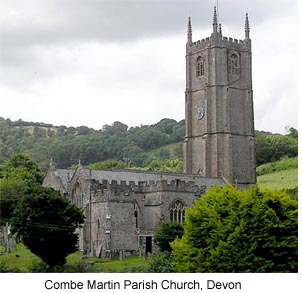 Indeed, the parish church is one of the first places people tracing British heritage should visit, for several reasons. The church may contain effigies or memorials dedicated to one's ancestors. The adjoining cemetery may contain relatives' graves. And, the clergy assigned to the church may keep parish registers, which record births, marriages, deaths and burials for that parish, dating back well over a century or two. If a parish no longer retains the registers, the local county record office generally stores copies, which they make accessible to the public with adequate notice.
Indeed, the parish church is one of the first places people tracing British heritage should visit, for several reasons. The church may contain effigies or memorials dedicated to one's ancestors. The adjoining cemetery may contain relatives' graves. And, the clergy assigned to the church may keep parish registers, which record births, marriages, deaths and burials for that parish, dating back well over a century or two. If a parish no longer retains the registers, the local county record office generally stores copies, which they make accessible to the public with adequate notice.
When they began their mapping project, the Board of Ordnance surely had no idea that their maps would become one of the most valuable items in every traveler's modern-day ensemble. Hikers and automobile passengers alike now pack OS maps into rucksacks, handbags and waterproof envelopes, crinkling the crisp pages as they head towards a destination, scan the landscape for ancient or historic monuments, or revel in the wide open countryside. Unfortunately, as they seek to modernize their maps, the Ordnance Survey has begun removing some details. So, if at all possible, travelers and researchers would do well to obtain an older OS map, particularly the green Pathfinder series, for the region they wish to explore. And, examining a series of OS maps from more than one period of time, starting with the most recent and comparing them with earlier maps of the same area, can increase the accuracy of the search.
Most tourist information centers and local bookstores carry the pink Landranger series of OS maps for their region, and many also sell maps for adjacent areas. Older OS maps in the Pathfinder series can often be purchased in secondhand bookstores. Copies also exist in county record offices, public libraries and other institutions, including the Royal Commissions on Ancient and Historic Monuments. The Ordnance Survey itself provides a "get-a-map" Internet service.
No matter the goal, carrying at least one OS map in a back pocket will help enrich anyone's experience of the British Isles. And, when back in the comfort of home, visitors and local residents alike can use OS maps to relive their journey and retrace the trek across the landscape, remembering each step along the way and feeling just that much closer to their memories.
Understanding Right-of-Way
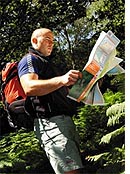 Even though public footpaths and rights of way across private property, including farms, moor land and manorial estates, have been freely accessible to ramblers for decades, the British government has only recently revamped its policy on the "freedom to roam." The UK's Countryside and Rights of Way Act of 2000 makes it legal for anyone to trek across open country -- mountain, moor, heath, down and common land -- in England and Wales. However, in order not to trespass and risk the possibility of legal problems or facing a property owner's wrath, the savvy traveler should carry the relevant OS map for the area. Not only do the maps cover the landscapes mentioned in the Rights of Way Act, they feature long used footpaths and bridleways known to be public rights of way. They also indicate restricted areas, such as Ministry of Defence firing ranges and training facilities, which may be open at certain times of the year or accessible with prior permission.
Even though public footpaths and rights of way across private property, including farms, moor land and manorial estates, have been freely accessible to ramblers for decades, the British government has only recently revamped its policy on the "freedom to roam." The UK's Countryside and Rights of Way Act of 2000 makes it legal for anyone to trek across open country -- mountain, moor, heath, down and common land -- in England and Wales. However, in order not to trespass and risk the possibility of legal problems or facing a property owner's wrath, the savvy traveler should carry the relevant OS map for the area. Not only do the maps cover the landscapes mentioned in the Rights of Way Act, they feature long used footpaths and bridleways known to be public rights of way. They also indicate restricted areas, such as Ministry of Defence firing ranges and training facilities, which may be open at certain times of the year or accessible with prior permission.
More Information:
We regret that we no longer have the resources to maintain up-to-date links and/or hours and pricing details for the various sites and attractions listed on this website. For more information about the location(s) listed above, please use your favorite search engine or visit Wikipedia.
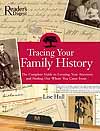 |
Lise Hull is a recognized authority on British castles and heritage, with a Master of Arts degree in Heritage Studies from the University of Wales, Aberystwyth, as well as a Master of Public Affairs degree, specializing in Historic Preservation, from Indiana University. She is the author of several of books on Britain, including Britain's Medieval Castles (Praeger: 2005), Great Castles of Britain and Ireland (New Holland: 2005) and Castles and Bishops' Palaces of Pembrokeshire (Logaston Press, 2005). Her work has appeared in numerous publications, including Military History Quarterly, Military History, Renaissance Magazine, Family Tree Magazine and Everton's Family History and Genealogical Helper magazines; she is also a regular contributor to Faerie Magazine. Visit her website at http://www.castles-of-britain.com.
|
Article © 2005 Lise Hull
Map and hiker images courtesy of Ordnance Survey; Combe Martin Church courtesy of Wikipedia
|
